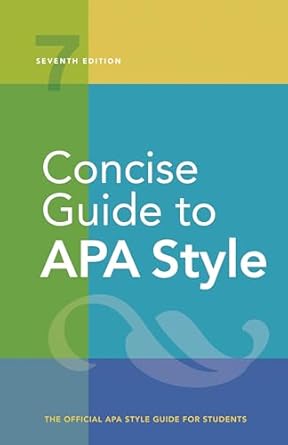[toc]
mastering italics usage guide examples
Concise Guide to APA Style: 7th Edition (OFFICIAL)
Page 119 Review
Understanding Italics: A Detailed Guide
Italics, a subtle yet powerful typographic tool, play a crucial role in enhancing clarity and conveying specific meanings within written text.
This analysis delves into the proper usage of italics as outlined in the provided excerpt, offering insights and practical examples for effective application.
Key Terms and Definitions
One of the primary functions of italics is to highlight key terms or phrases, often accompanied by a definition.
This helps readers quickly identify and understand important concepts within the text.
As the excerpt states: “Mindfulness is defined as ‘the act of noticing new things, a process that promotes flexible responding to the demands of the environment’ (Pagnini et al., 2016, p. 91).” In this example, ‘Mindfulness’ is italicized to draw attention to its definition, aiding comprehension.
Titles of Works
Italics are also used to denote the titles of various stand-alone works, including books, reports, and webpages.
According to the excerpt: “titles of books, reports, webpages, and other stand-alone works (see Section 9.19)”.
The excerpt provides an example: “Multicultural Feminist Therapy: Helping Adolescent Girls of Color to Thrive”.
This convention ensures that the titles are easily distinguishable from the surrounding text.
Periodicals
Similarly, italics are applied to the titles of periodicals, such as journals and magazines.
The excerpt mentions: “titles of periodicals (see Section 9.25)”.
An example given is: “Cultural Diversity & Ethnic Minority Psychology”.
This practice helps readers identify specific publications and differentiate them from articles or chapters within those publications.
Scientific Nomenclature
In scientific writing, italics are essential for indicating genera, species, and varieties.
The excerpt notes: “genera, species, and varieties”.
For example, “Cebus apella” is presented, where both the genus and species names are italicized, following the established rules of biological nomenclature.
Statistical and Algebraic Variables
Italics also serve a purpose in mathematical and statistical contexts.
The excerpt points out: “letters used as statistical symbols or algebraic variables”.
Examples provided are “Cohen’s d = 0.084”, “a/b = c/d”, and “MSE”.
This convention ensures that variables are easily recognizable and distinct from regular text.
Reference List Specifics
When constructing reference lists, italics play a role in identifying periodical volume numbers.
The excerpt states: “periodical volume numbers in reference lists”.
An example provided is: “Neuropsychology, 30(5), 525-531”.
The volume number, ’30’ in this case, is italicized to adhere to referencing standards.
Scale Anchors
In research and surveys, italics are used to highlight the anchors of a scale, although the associated numbers are not italicized.
The excerpt mentions: “anchors of a scale (but not the associated number)”.
Examples include: “ranged from 1 (poor) to 5 (excellent)” and “rated using a Likert scale (1 = strongly disagree to 5 = strongly agree)”.
This usage emphasizes the descriptive labels of the scale points.
Foreign Language Terms
Finally, italics are utilized when introducing a word, phrase, or abbreviation from another language that may be unfamiliar to readers.
As the excerpt notes: “the first use of a word, phrase, or abbreviation from another lan- guage when readers may not be familiar with it”.
However, if the term is commonly found in a dictionary for the language of writing, italics are not necessary.
The excerpt refers to “Section 5.1” for further clarification on this rule.
Conclusion
In conclusion, the judicious use of italics is crucial for enhancing readability and conveying specific meanings in writing.
From highlighting key terms and titles to indicating scientific names and scale anchors, italics serve a variety of purposes.
By adhering to these guidelines, writers can effectively communicate their ideas and ensure clarity for their readers.
The examples and rules outlined in the excerpt provide a solid foundation for understanding and applying italics correctly.
Buy full ebook for only $18: https://www.lulu.com/shop/american-psychological-association/concise-guide-to-apa-style-7th-edition-official/ebook/product-rmzpq54.html?page=1&pageSize=4
Mastering Italics Usage Guide Examples
Read more: APA Quotation Guide: Mastering Direct Quotes

